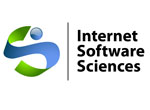For some time now, our approach to healthcare has been extremely antiquated. Specifically, the way that we stored, shared, and used information was essentially the way that we had done so since the beginning of the 20th century: taking notes in the office, storing them, and then having them sent on request using a series of complex, often inefficient bureaucracies, is how most hospitals and doctors’ offices have handled their patients and their records.
This approach led to a number of clerical and medical mistakes that inevitably caused serious damage to organizations and their reputations, not to mention the patients themselves, who have often suffered from accidental malpractice, problems with their prescriptions, and other errors that would likely not have occurred at all had the patients and the doctors involved had all the facts at their disposal when they needed them.
Even once information technology had advanced in the ‘90s and early ‘00s to improve our capacity to store, share, and access critical data, health institutions often did make use of these systems, as making the transition from the paper-and-ink system to more efficient software often proved too daunting.
Furthermore, the matter was complicated by some institutions adopting healthcare IT software while others did not; software platforms did an institution few favors if the other institutions they needed to share information with ran on different, paper-and-ink systems, or vice-versa. As a result, the move to adopt a 21st-century approach to healthcare has been slow and halting at best.
The Times, They Are A-Changin’
Today, the adoption of information technology systems at healthcare institutions is increasingly common, which is great news for patients, nurses, and doctors alike. The use of these technologies allows for everyone in the healthcare process to access electronic health records anytime, anywhere, using hospital terminals or even from mobile devices. The use of a web-based platform allows for this data to be stored securely, in the cloud, where the data can be shared and updated to allow for maximum efficiency and speed.
This technology also allows for improved communications between staff and patients. The ability to make notes and add information to one’s health records creates a conversation between patient and doctor that is faster than attempting to contact your doctor by phone or e-mail, as those communications are often lost in the hustle and bustle of the everyday. All of this results in better outcomes for the patient, which is truly the goal of all these advances.
The Future of Medical Software
The future of the use of this information is almost here. While today we focus on the sharing and organization of data, that data will eventually see use in big data techniques to create predictive care for patients, allowing doctors to catch illnesses long before they ever develop. Storing DNA will allow medicine to be created and tailored according to the particular needs of your unique biology, making prescription medication even more effective.
The future that we learned about when we watched science fiction films is almost here as far as medicine is concerned. The ability to quickly and effectively cure diseases and heal injuries can only be improved by having access to more information, and more accurate and timely information.
Supporting Your Software
At this point, making these advances for your healthcare organization is not a matter of if, but when. That means doing your research and finding the best possible software platform for your organization – and we humbly submit Web+Center as the most fully-featured IT software platform available for healthcare organizations today.
Web+Center is already used by many healthcare institutions for their IT support operations, allowing for hospitals to reliably access and use information systems and networking infrastructure. Web+Center allows help desk staff to quickly create, update, and dispatch problem tickets crucial to the hospital’s operations, allowing the system to be repaired, updated, and back on track in no time flat. When it comes to the health and wellbeing of your patients, you can’t afford for there to be a gap in your service and the information you need to provide that service. With Web+Center, there won’t be.



